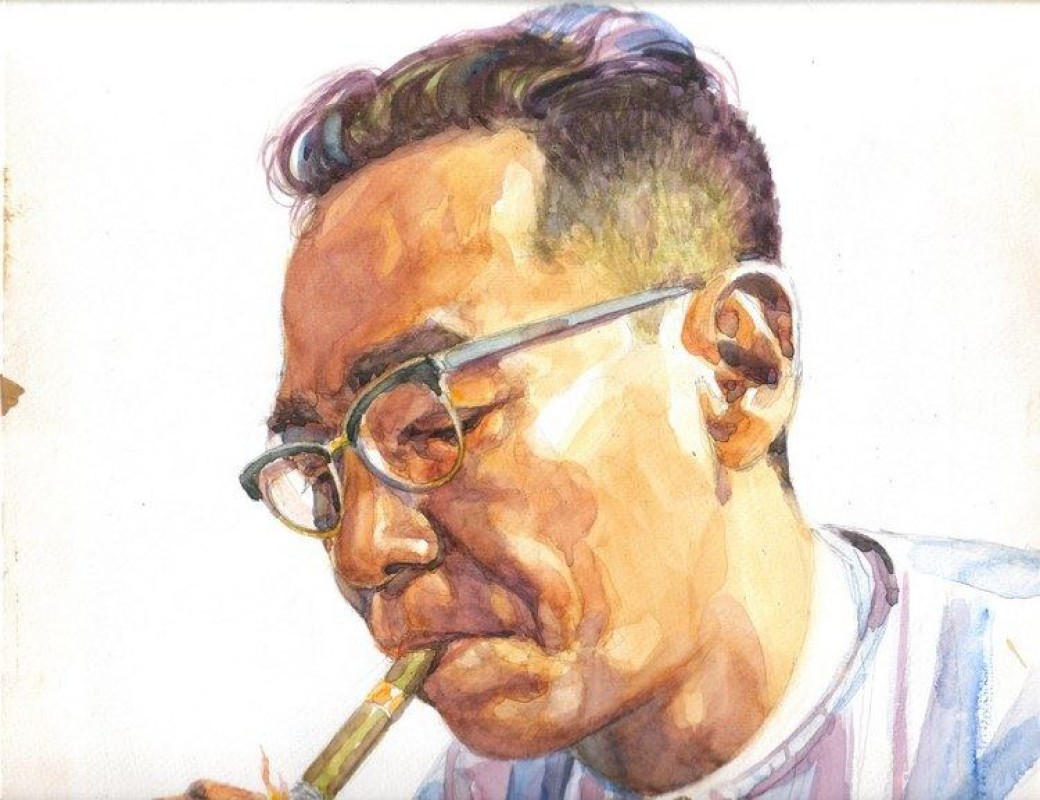Golden Land, Golden Pens: Three Writers Who Illuminated Myanmar

514

By Hsu (NP News)- May 22
Myanmar, a land of ancient temples and breathtaking landscapes, harbors an equally profound, yet often less explored, treasure: its rich and resilient literary tradition. For centuries, writers have woven the nation's intricate history, diverse cultures, and stunning geography into powerful narratives. This news feature delves into the lives and works of three prominent 20th-century Myanmar writers whose masterpieces not only captivated a nation but also offer the world a window into the soul of this Southeast Asian jewel, aiming to ignite international curiosity and celebrate Myanmar's high standard of literature.
Min Thu Wun: The Poet of New Burma
The serene verses of Min Thu Wun reflect both Myanmar’s natural beauty and its yearning for renewal. Born in 1909 in Thaton, Mon State—a region rich in folklore and lush landscapes—Min Thu Wun emerged as a literary reformer and one of the founding fathers of modern Burmese poetry.
He helped pioneer the Hkit Sann (“Testing the Times”) movement in the 1930s, which sought to modernize Burmese literature by moving away from rigid classical structures toward more accessible and expressive forms. His poetry collection, "Gaba Nyein" (The World is Calm), is a tender meditation on love, nature, and humanity, often infused with Buddhist philosophy.
Min Thu Wun’s works are imbued with the rhythms of the land: the rustle of rice fields, the chant of monks, and the hush of twilight rain. His lyricism brought a new sensitivity to Burmese poetry—one that reflected both inner and outer landscapes. Even in the face of censorship and political tension, he maintained a gentle, optimistic tone that stood as a quiet resistance against authoritarianism.
As an academic and a member of parliament, he also mentored young writers, leaving a lasting impact on Myanmar's literary ecosystem. His success lies not just in his artistry but in his ability to inspire a national movement toward literary innovation.
Journal Kyaw Ma Ma Lay: A Pen for the People
Few authors in Myanmar's history have captured the emotional weight of ordinary lives with the grace and realism of Kyaw Ma Ma Lay. Born in 1917 in the Ayeyarwady region, she adopted the pen name “Journal Kyaw Ma Ma Lay” and emerged as one of the country’s most respected female writers during the 20th century.
Her masterpiece, "Not Out of Hate" (rkef;ír[l - Mone Yaye Ma Huu), remains a landmark novel in Burmese literature. Set in colonial-era Yangon, the novel explores themes of identity, love, and cultural conflict between the Burmese and British. Told through the eyes of a young Burmese woman, it critiques both colonial subjugation and the struggles of modernization. Translated into several languages, the novel has found resonance among international readers and scholars alike.
Ma Ma Lay's strength lies in her ability to blend personal stories with broader social critique. Her geographic origins in the delta region, marked by agricultural hardship and resilience, helped her develop a keen eye for the socio-economic pressures facing rural Burmese families. Her vivid portrayals of women, often grappling with tradition and transformation, elevate her as a feminist voice long before such terminology became common.
Her success is rooted in authenticity—writing what she saw, felt, and believed. In doing so, she created literature that speaks across generations and borders.
Ludu Daw Amar: The Voice of Conscience
Born in 1915 in Mandalay—the royal city that remains a cultural heart of Myanmar—Ludu Daw Amar was more than a writer; she was a chronicler of the Burmese soul. Educated during British colonial rule, Daw Amar’s writings reflect her fearless engagement with political realities. Her most notable works include collections of essays that examine Myanmar’s political upheaval and social transformations.
Ludu Daw Amar’s success is deeply rooted in her unwavering integrity and intellectual courage. Despite enduring imprisonment and censorship under successive regimes, she remained a fierce advocate for freedom of expression and cultural preservation. Her essays offer not just historical commentary but a nuanced reflection on the geographical and ethnic diversity of Myanmar—capturing voices from the hills of Shan State to the Irrawaddy delta.
Her literature is both deeply personal and nationally resonant. By grounding her political narratives in the daily lives of ordinary people, she helped the world see Myanmar beyond headlines. Daw Amar’s legacy is that of a nation’s conscience, uncompromising and unbowed.
A Cultural Tapestry Waiting to Be Discovered
The works of Ludu Daw Amar, Journal Kyaw Ma Ma Lay, and Min Thu Wun represent a trifecta of Myanmar's literary excellence. Each, in their own voice, captured the complexities of a country caught between tradition and change, war and peace, isolation and global yearning.
Their literature is not just reflective of Myanmar's political and historical tapestry—it is shaped by the nation’s geography: the slow life of the river valleys, the haunting quiet of mountain villages, the crowded dynamism of Yangon streets. These elements breathe through every paragraph, offering international readers a textured and emotional journey into the heart of the Golden Land.
In an era of renewed global interest in Southeast Asia, these literary icons stand ready to guide readers through the intricate, often overlooked beauty of Myanmar. They challenge us to listen more deeply and to see beyond the veil of geopolitics, into the realm of human stories that unite us all. –